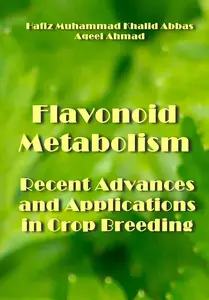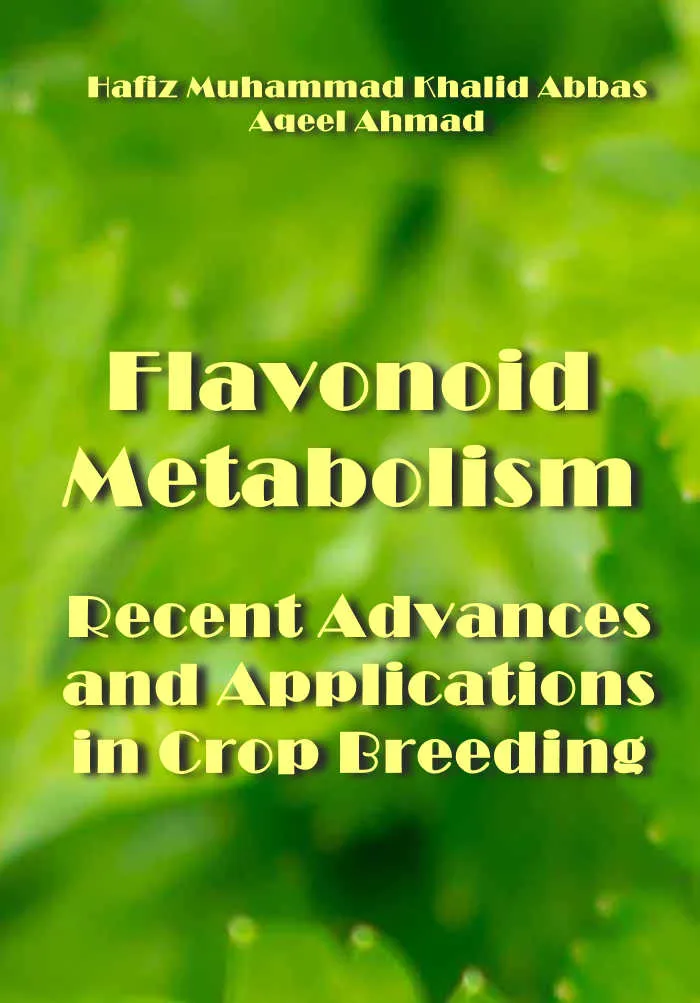"Flavonoid Metabolism: Recent Advances and Applications in Crop Breeding" ed. by Hafiz Muhammad Khalid Abbas, Aqeel Ahmad
ITexLi | 2023 | ISBN: 1803567058 9781803567051 180356704X 9781803567044 1803567066 9781803567068 | 163 pages | PDF | 10 MB
ITexLi | 2023 | ISBN: 1803567058 9781803567051 180356704X 9781803567044 1803567066 9781803567068 | 163 pages | PDF | 10 MB
This book delves into the structural diversity of flavonoids found throughout the plant kingdom, the evolution of flavonoid biosynthesis genes in plants, and the molecular interaction of flavonoids with growth hormones. The metabolic routes of flavonoids are thoroughly investigated using both biochemical and molecular biology methods, and the book elucidates the links between genes/proteins and metabolites, as well as between metabolites. The book also explores the interplay between flavonoid metabolism and external environmental factors that are subject to continuous change.
The presence of flavonoids such as chalcones, flavones, flavonols, anthocyanins, and proanthocyanidins is ubiquitous throughout the plant kingdom. It was previously believed that the oldest plants that produced flavonoids were liverworts and mosses. However, recent discoveries have found genes encoding enzymes in the shikimate pathway responsible for flavonoid biosynthesis in a variety of plants including algae, liverworts, mosses, lycophytes, ferns and horsetails, gymnosperms, and angiosperms. These genes include the first two enzymes for flavonoid biosynthesis, chalcone synthase and chalcone isomerase. Furthermore, recent research has found flavones, isoflavones, and flavonols in microalgae from five distinct evolutionary lineages (Cyanobacteria, Rhodophyta, Chlorophyta, Haptophyta, and Ochrophyta) using ultra-high performance liquid chromatography with tandem mass spectrometry. This implies that plants may have developed the capacity to make flavonoids earlier than previously believed. Flavonoids in the earliest plants that produced them were believed to have acted as protection against UV radiation and control of plant hormone activity. As plants evolved, these roles diversified, and the study of flavonoids has revealed how plants developed the capacity to produce a wide array of specialized metabolites and then evolved the metabolic pathways required to manufacture them.
Contents
1. Chemistry and Role of Flavonoids in Agriculture: A Recent Update
2. Importance of Flavonoid as Secondary Metabolites
3. Flavonoids Biosynthesis in Plants as a Defense Mechanism: Role and Function Concerning Pharmacodynamics and Pharmacokinetic Properties
4. Purple Corn Cob: Rich Source of Anthocyanins with Potential Application in the Food Industry
5. Application of Liquid Chromatography in the Analysis of Flavonoid Metabolism in Plant
6. Recent Advances in Flavonoid Metabolism: An Updated Review
7. Flavonoids: Recent Advances and Applications in Crop Breeding
1st true PDF with TOC BookMarkLinks
More : You find here



